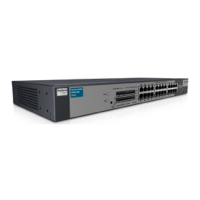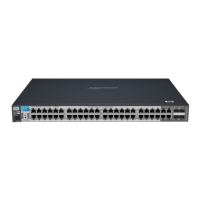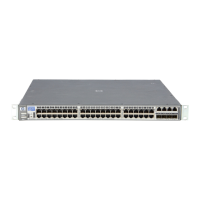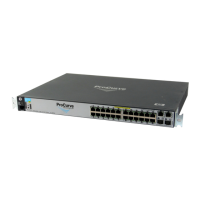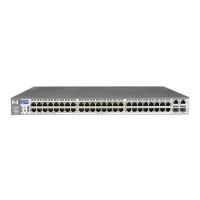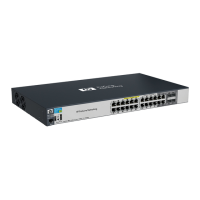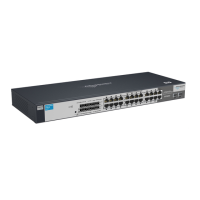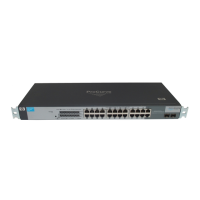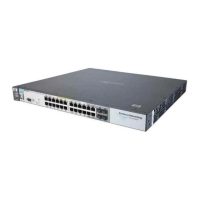5-25
Multiple Instance Spanning-Tree Operation
802.1s Multiple Spanning Tree Protocol (MSTP)
Syntax: spanning-tree < port-list > point-to-point-mac < force-true | force-false |
auto >
This parameter informs the switch of the type of device to
which a specific port connects.
Force-True (default): Indicates a point-to-point link to a
device such as a switch, bridge, or end-node.
Force-False: Indicates a connection to a hub (which is a
shared LAN segment).
Auto: Causes the switch to set Force-False on the port if it
is not running at full duplex. (Connections to hubs are
half-duplex.)
Syntax: spanning-tree < port-list > priority < priority-multiplier >
MSTP uses this parameter to determine the port(s) to use
for forwarding. The port with the lowest priority number
has the highest priority. The range is 0 to 240, and is
configured by specifying a multiplier in the range of 0 -
15. That is, when you specify a priority multiplier of 0 -
15, the actual priority assigned to the switch is:
(priority-multiplier) x 16
For example, if you configure “2” as the priority multiplier
on a given port, then the actual Priority setting is 32. Thus,
after you specify the port priority multiplier, the switch
displays the actual port priority (and not the multiplier)
in the show spanning-tree or show spanning-tree < port-list >
displays.
You can view the actual multiplier setting for ports by
executing show running and looking for an entry in this
format:
spanning-tree < port-list > priority < priority-multiplier >
For example, configuring port A2 with a priority
multiplier of “3” results in this line in the show running
output:
spanning-tree A2 priority 3
Syntax: spanning-tree < port-list > root-guard
MSTP only. When a port is enabled as root-guard, it cannot
be selected as the root port even if it receives superior STP
BPDUs. The port is assigned an “alternate” port role and
enters a blocking state if it receives superior STP BPDUs.
The BPDUs received on a port enabled as root-guard are
ignored. All other BPDUs are accepted and the external
devices may belong to the spanning tree as long as they do
not claim to be the Root device.
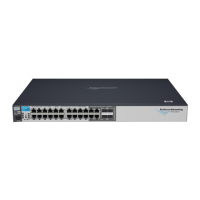
